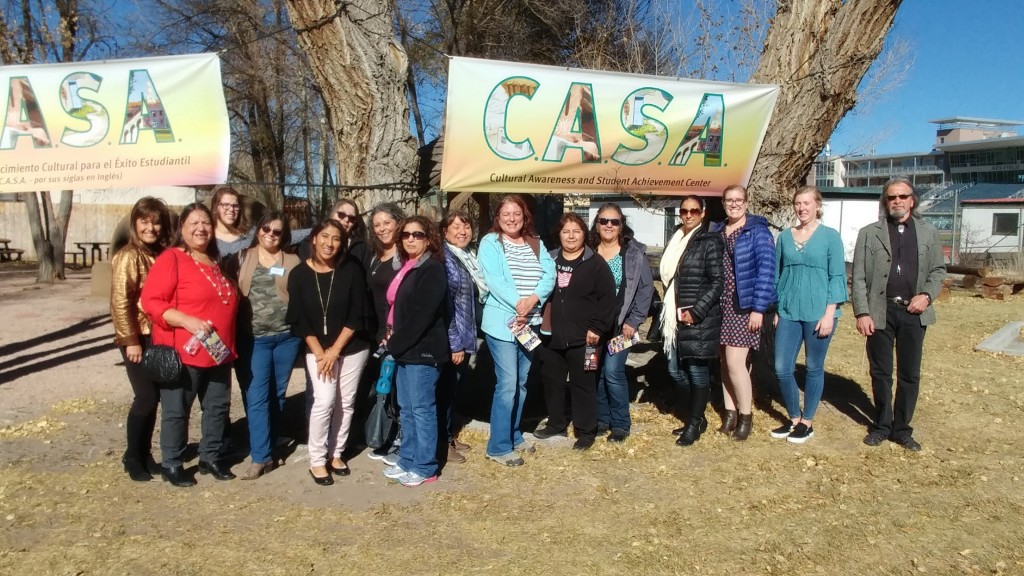First place-based teacher workshop a success

ALAMOSA—The Sangre de Cristo National Heritage Area (SdCNHA) is embarking on an educational journey through the history of the San Luis Valley with local educators.
The youth of the San Luis Valley are the key to passing on local culture and traditions to the next generation. Allowing them to actively engage in learning within the place they live empowers students to take ownership of local stories, fosters passion about their own educational journey, and creates a sense of pride in their communities. Students learn and retain this information best when locals within their community become actively involved in the learning process. Locals are already experts about the history, culture, and problems that need to be solved within their own communities. The elders of a community hold powerful and historically significant stories that honor local culture, history and traditions.
SdCNHA aims to assist local educators in implementing this kind of place-based/community based learning. On Nov. 3, the Sangre de Cristo National Heritage Area partnered with Adams State University and the University of Colorado at Boulder to hold a one-day workshop. Victoria Martinez, SdCNHA executive director, shared with local educators the heritage area’s collection of research, resources and oral history videos.
Twenty-two San Luis Valley teachers from five school districts and one retired teacher registered for the workshop. Participants had the opportunity to learn about the heritage area's collection of primary resources, research, and oral history videos that are available to local teachers for creating place-based curricula and the lesson plans that are already available for immediate implementation.
Boulder County teachers shared some of the lessons they are already utilizing in their classrooms. Teachers became students for the day and participated in hands-on activities. Educators also listened to guest speakers present on the history of the area and various projects that could provide content for lessons. At the end of the day Oneyda Maestas took educators on a field trip to ASU’s Cultural Awareness and Student Achievement (CASA) center.
“This teacher workshop was an integral opportunity to educate teachers on what is available to them. The ASU C.A.S.A. Center is excited to host students and to further promote culture and education to our SLV school districts. We would like for future children/students to know that they are welcome at the C.A.S.A. Center anytime and are always welcome to bring their parents and extended family members. My goal is for the C.A.S.A. Center to be a "field trip/excursion" location for place-based learning regarding culture, language, traditional foods, cooking in the hornos, the art of sheep-herding via our museum-like sheepherder's trailer, the art of weaving, in addition to STEM activities (ASU mineral museum, ASU Planetarium, Volcanology Hydrology, palentogy, pottery making, art activities, music and traditional remedies. Our cultural and educational offerings will meet the K-12 State Standards for culture, history, language, science, art, music, and math!” said Oneyda Maestas.
C.A.S.A. offers a hands-on weaver, a sheepherder who can tell the history and art of sheep herding and its importance in our valley; a tour of the C.A.S.A. Center's sheepherder's trailer from 1955; fire building in an horno and traditional horno foods; and a tortilla making workshop. All activities will offer vocabulary in English and Spanish.
“I don’t like attending workshops. It’s usually sitting and listening and they are all the same, but this one was fun,” said Phyllis Vigil, a first grade teacher from Sierra Grande.
One of the ways the SDCNHA has been documenting important pieces of oral history that can serve as supplemental resources for educators, is through the Voices of the Valley project. Voices of the Valley explores and documents, through interviews on video, the oral history from lifelong community members within the heritage area. Every week on the heritage area’s YouTube channel (SangreNHA), new interview segments are posted, so everyone can freely participate in learning and holding on to the culture and stories of our local communities.Learn more about available lesson plans, and other heritage area projects at www.sdcnha.org



